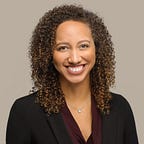Just a Lump
“The best protection is early detection”
Almost exactly a year ago, I found a lump on my breast. At that time I had just turned 24 years old, was preparing for some of the hardest final exams of my life, and stressed to the point that I didn’t even know where to begin this journey. Given my family history, my first thought was breast cancer. My aunt died from it 2014 and my grandma on my other side of the family battled with breast cancer for about 10 years.
I did not want to worry my mother about this news until I had more conclusive information, so I decided to make an appointment to get a women’s exam. Sure enough my doctor felt it too and recommended that I get an ultrasound. At this point it was now summer vacation and I was traveling back to my hometown (in a different state). Long story short due to different state laws and our complex healthcare system, I had to get another exam so that they could refer me to get an ultrasound. That doctor also confirmed a lump and set me up for my ultrasound appointment. At this point, it had been over a month of me worrying and contemplating every scenario of the worst outcome of these results.
Will I have to drop out of school? How will I tell my friends? My boyfriend? Will I have to cut off my hair? What are my real chances at surviving this?
After much prolonged anticipation, I was notified that the lump was a fibroadenoma. A fibroadenoma is a solid, noncancerous lump found in the breast that occurs most often in women between the ages of 15 and 35. I had never heard of this before, and I was immediately relieved. Given my family history, the doctor still suggested to get exams and ultrasounds regularly and to keep an eye on the lump.
I cannot see this lump in my breast, but I can certainly feel it if I’m looking for it. It’s always there, close to my heart along with the memories of my loved ones who battled something that was much more than “just a lump”.
You are never too young or too old, cancer has no preference and waits for no one. Preventitive steps you can take to identify breast cancer risk include:
- Close observation and self examination
- Incorporate healthy lifestyle choices
- Breast exams and or risk assessment every 6–12 months
- Starting breast cancer screenings at an earlier age
- Genetic counseling and tests
- Prophylactic surgery for very high risk
Take Care,
-Marissa
